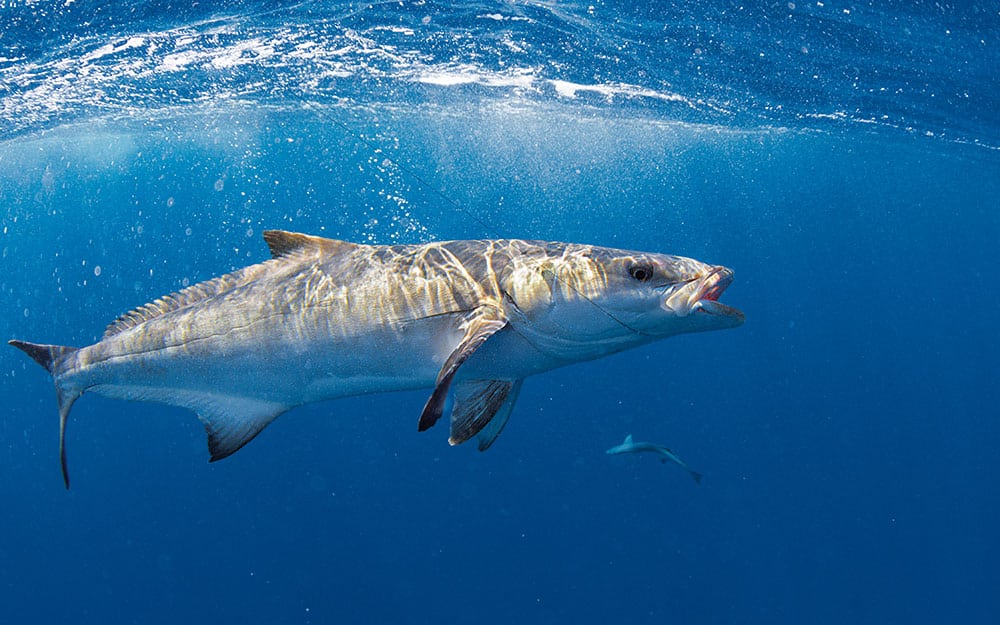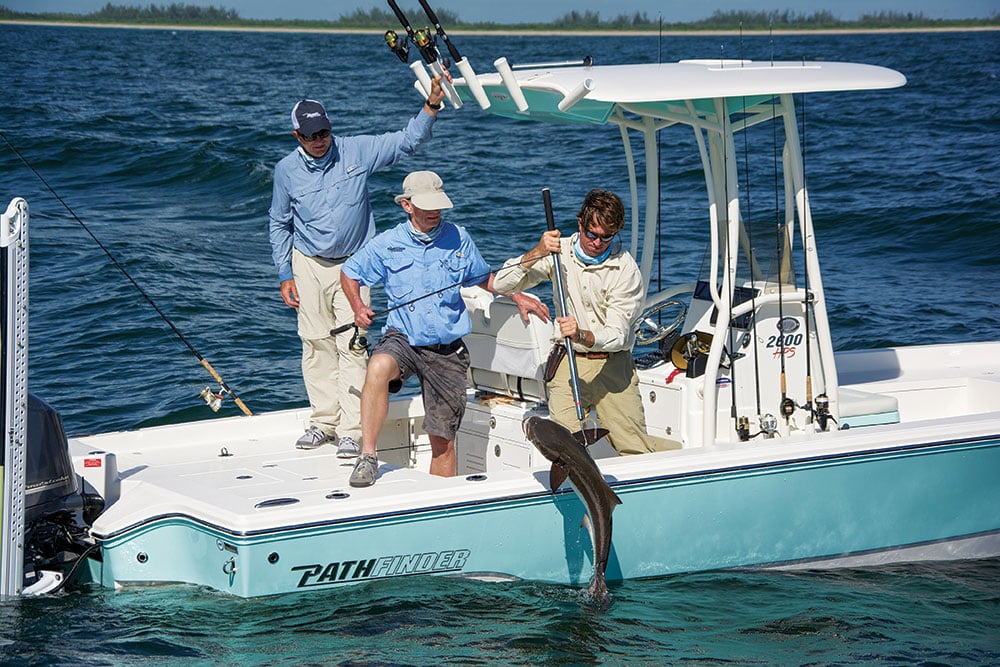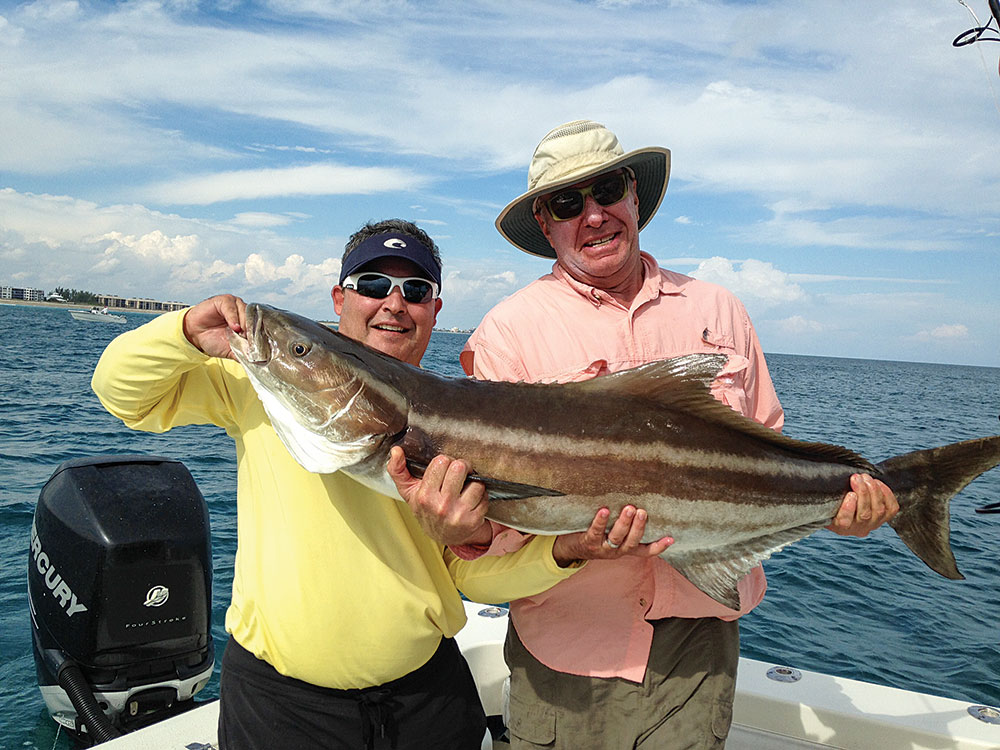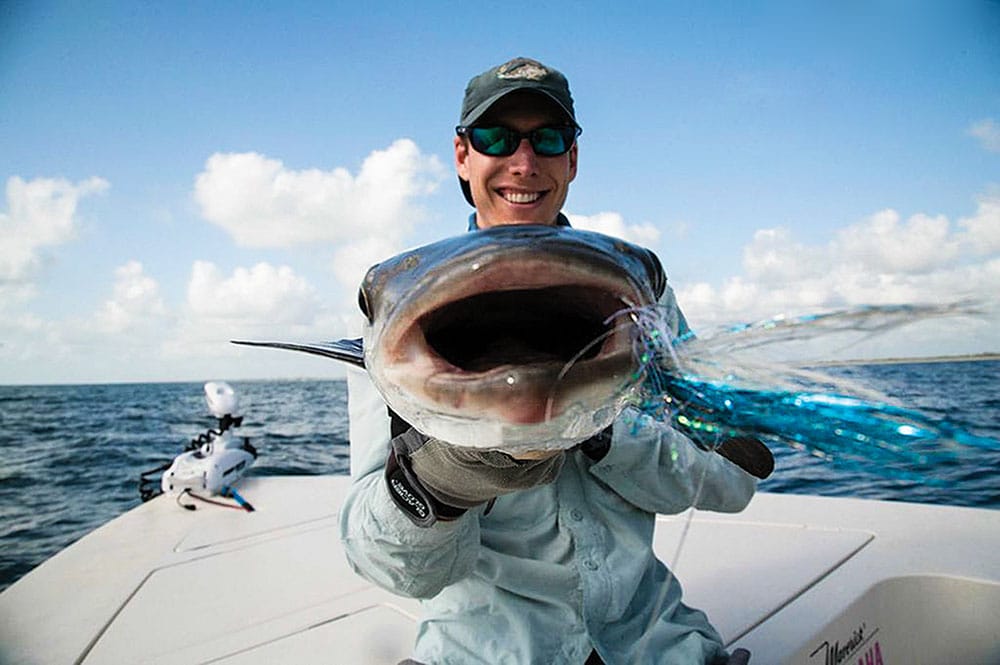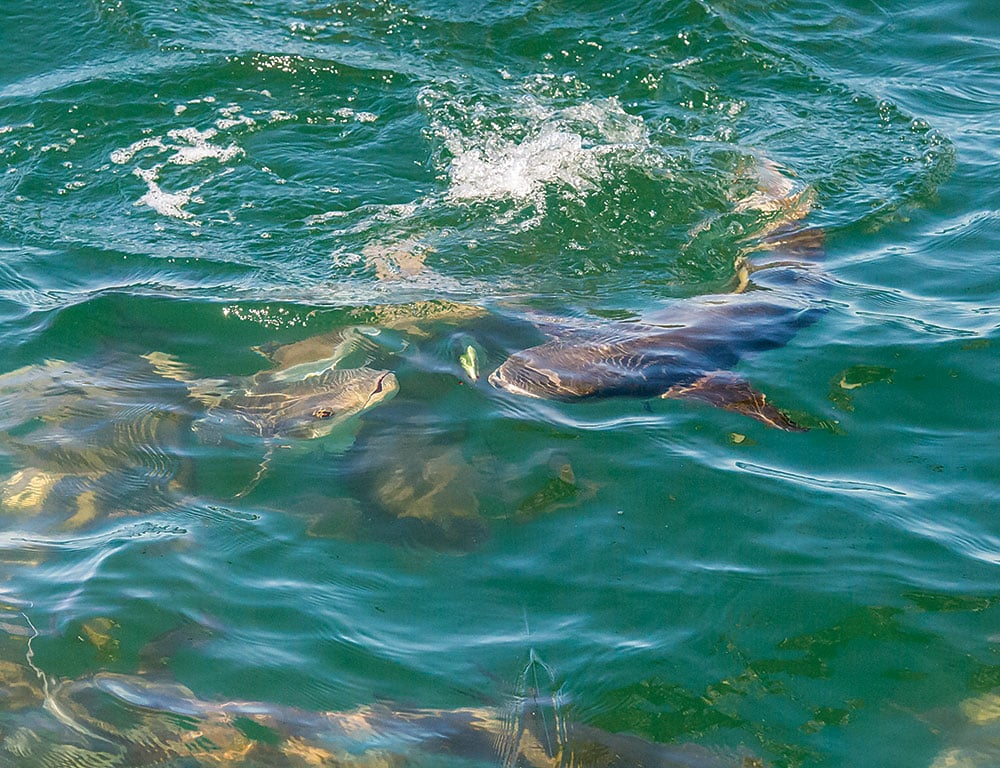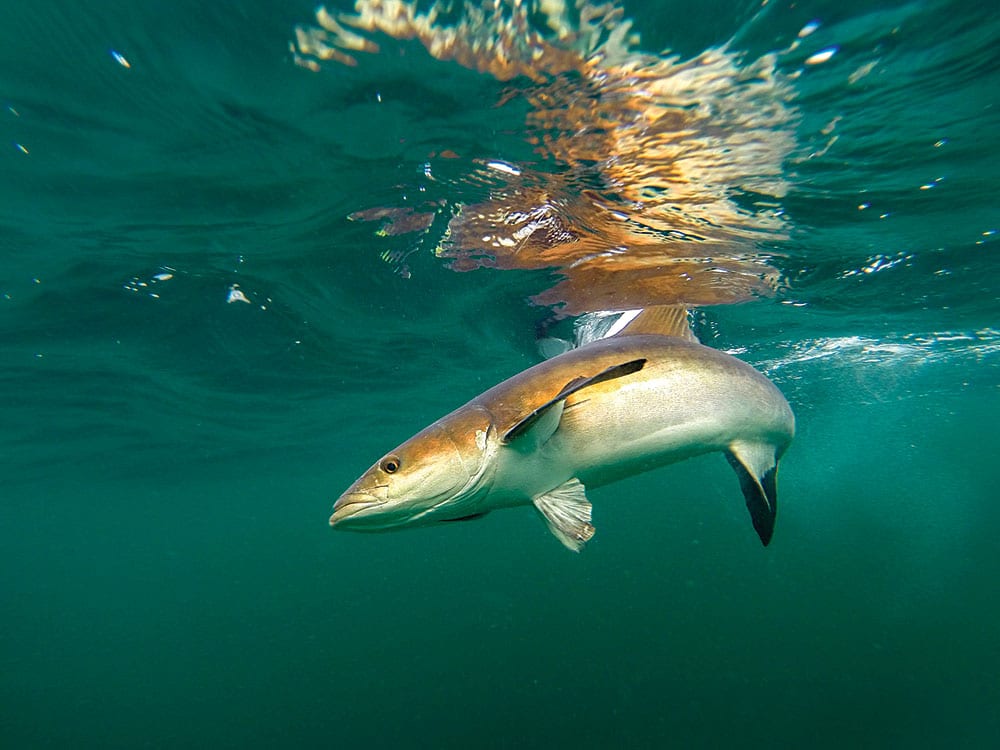In 90 feet of water, Mark Beatty and I found a large school of threadfin herring breezing on the surface, so we started the sabiki bait-gathering assembly line. An unseasonably mild onset of winter had the main body of sailfish somewhere between Stuart and Sebastian, Florida, and that was our target for the day — or so we thought. With the well filling quickly, a dark shape on the edge of the school caught my eye, and a massive manta ray ghosted along just below the surface, with a cloud of brown flanking it.
“Cobia!” I shouted. “On that ray!”
We motored within casting distance of the ray and fired live threadfins on spinning rods loaded with 50-pound braided line, then watched the baits race to the surface followed by a pair of massive fish. What happened next was completely unexpected.
Beatty’s fish dived straight for the bottom, while mine blistered a 50-yard wake across the surface and jumped — twice! Given the size and power of the fish, I initially thought I’d hooked a porpoise, but when it jumped, I knew it was a tank-size cobia.
In the time it took me to get the fish to the boat, Beatty landed and gaffed his 50-pounder, caught a 20-pound dolphin and broke off a nice wahoo, but the smack talk went silent when my cobia came alongside. It wasn’t 100 pounds, but it sure came close, which is why we double gaffed it and hauled it over the side in tandem.
A cobia double sure was an unexpected surprise, one that can take place anywhere in South Florida from November through March.
Temperature Key
Cobia prefer water temperatures between 68 and 72 degrees, so as the seasonal cycle of cold fronts begins, the main body of the Atlantic’s migratory cobia works its way to South Florida, somewhere between Cape Canaveral and Key West. The harshness of each winter determines how far south the fish travel.
As a rule, during the coldest months, the biggest concentration of cobia is in the Florida Keys. Then, as spring hits somewhere around Valentine’s Day, the water temperatures along the beaches start to climb, and the fish work their way back north.
When the air goes cold, the waters off the beaches and around nearshore wrecks are the first affected by temperature drops. As fall turns to winter, cobia seek the warmer water offshore. Conversely, the first warm days of February also raise the water temperatures on the beaches and shallow wrecks, bringing the cobia in close.
The southern migration rarely takes the fish close to shore. Instead, cobia, and baitfish like threadfin herring and Spanish sardines take up residence on the deeper wrecks, where manta rays often work the edges of rip currents for plankton.
Small Window
Deepwater cobia are a different animal than those found in the shallows. Generally, the fish pop up when you approach a reef or wreck, then you won’t see them again, unless they follow a hooked fish to the boat. That’s one reason pitch rods are an essential component of an offshore arsenal in Florida — often, you don’t have time to grab a rod, catch a bait in the livewell, hook it and cast before the cobia are gone. It pays to have a spinning rod in each transom corner rigged with a bait sitting in a 5-gallon bucket. Another option is a 2- to 5-ounce chartreuse or bright orange jig or a jigging spoon. The heavy jig sinks fast and allows you to target the fish even when they head for the bottom.
During cobia time, it is also smart to carry a medium-heavy spinning rod rigged with a large, hookless surface popper to tease a fish to the boat, while another angler waits to cast a live bait or lure once it gets close.
Cobia often dog a lure and try to nose it to see if it’s edible. You need to pull the lure away from the fish, let them catch up to it and do it all again. It usually only takes two or three attempts for a cobia to finally light up and charge the lure. Don’t let a fish touch the lure when it tries to nose it; let that happen and the cobia will know it’s not real, and abandon the chase.
Cobia are not particularly selective when it comes to natural baits. A whole squid is cobia candy; so is a live shrimp or crab. Pin either of these baits to a 3⁄8- or ½-ounce jig head to fish them deeper in the water column if the fish are holding tight to a wreck. Live pinfish, threadfins, pilchards, blue runners, goggle-eyes and cigar minnows are also excellent choices. Pick the liveliest in your well to force the fish to react quickly and charge the bait.
In the Florida Keys, where water temperatures can be mild (in the 70s) even in the height of winter, cobia often bask around wrecks and range markers. Here, swimming plugs and tube lures — in addition to most live or dead natural baits — can really shine.
Ray of Hope
During unseasonably warm winters when temperatures along the beaches fluctuate from the low to mid 70s, cobia usually push in toward shore from January through March, but they could do so as early as December. These fish like to hitchhike on manta rays, turtles and especially big stingrays on the bottom.
When calm seas clean up the water along the beaches, anglers often run along the coast at depths of 15 to 30 feet, scanning the bottom for stingrays with a posse. At times, the cobia pop up on the surface as a boat approaches, but more often they stay deep, requiring jigs or weighted natural baits. The key is to keep track of the ray, not the hooked fish. Once a fish is landed, you want to be able to locate the school again.
Some of the largest cobia of the year are taken in the winter months, so be ready with a second gaff if you plan to keep your catch. I like to use an extra-large landing net. It controls the fish better, and when schools of winter cobia are borderline legal, netting is the best way to carefully land fish you intend to release.
